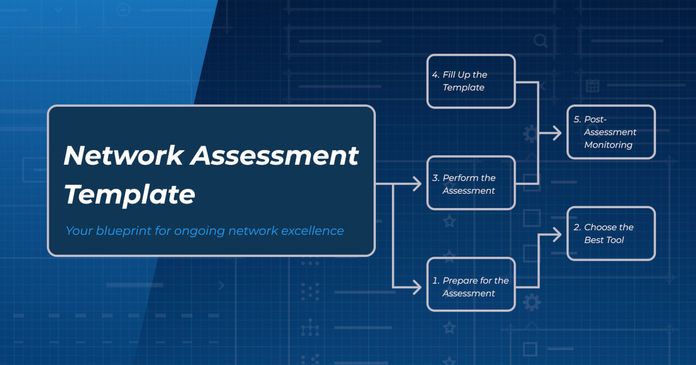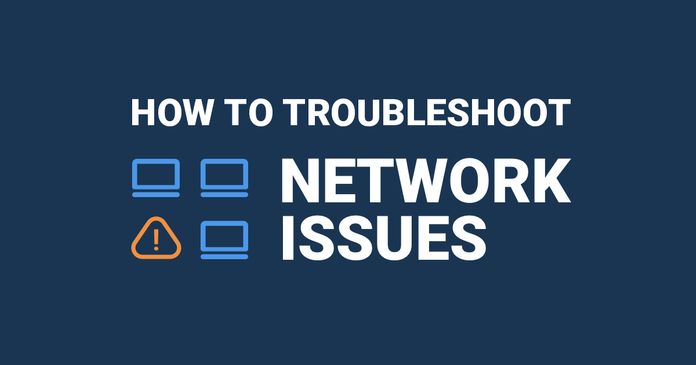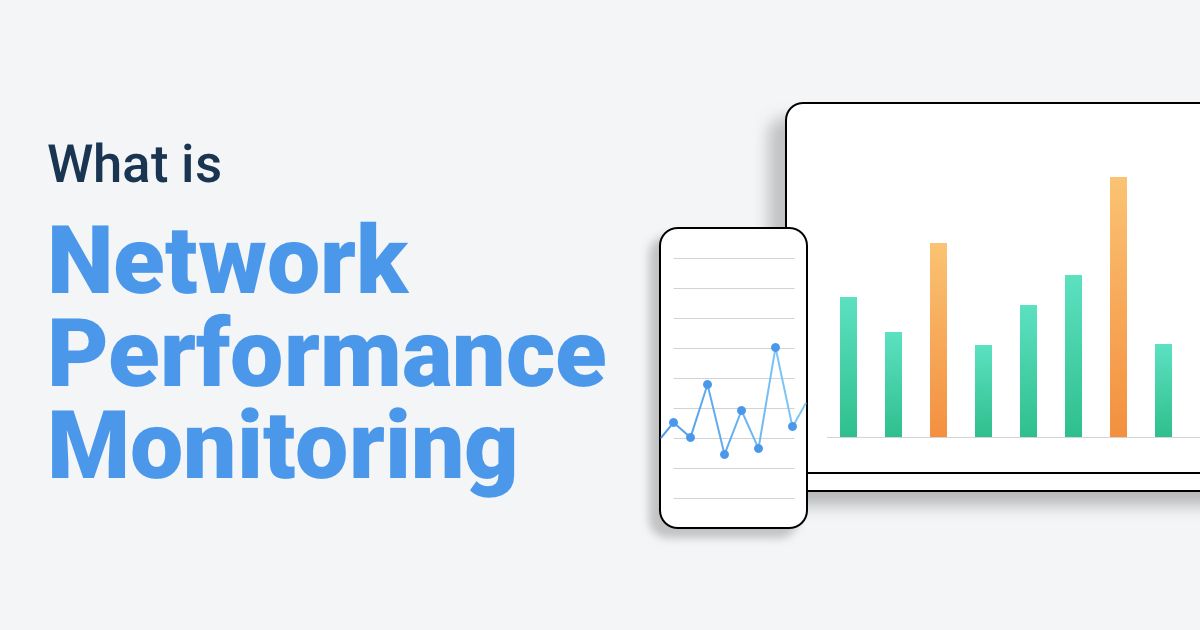Table of Contents
Table of Contents
In today's fast-paced digital landscape, Managed Service Providers (MSPs) play a critical role in ensuring the seamless operation and security of their clients' networks. As businesses increasingly rely on complex networks to power their operations, the need for vigilant network monitoring has never been greater. Enter Network Monitoring - the unsung hero that empowers MSPs to proactively manage, optimize, and safeguard their clients' network infrastructures.
In this blog post, we delve into the world of Network Monitoring and unveil its top three invaluable use cases for MSPs. From preserving network integrity and minimizing downtime to fortifying cybersecurity defenses, network monitoring emerges as a versatile tool that underpins the core functions of MSPs. Whether you're a seasoned MSP looking to enhance your services or a business owner curious about the magic behind seamless network experiences, join us as we explore the tangible benefits of Network Monitoring in the realm of managed services.
Discover how this technology empowers MSPs to deliver on their promises of reliability, performance, and security, all while keeping a watchful eye on the intricate web of connections that keep businesses thriving in the digital age. Let's dive in and unravel the essential roles that Network Monitoring fulfills for MSPs and the clients they serve.
In today's tech world, the term network monitoring is widespread throughout the IT and network industry.
Network monitoring is the process of continuously measuring and analyzing network metrics to gather information to determine, in real time, whether a network is running optimally. More specifically, it allows you to define the quality of services offered by the underlying network, primarily measured from an end-user perspective.
The primary goal of network monitoring is to identify and address issues, anomalies, and potential threats in real-time, allowing network administrators, managed service providers (MSPs), and IT teams to maintain a well-functioning and secure network environment.
Key aspects of network monitoring include:
- Performance Monitoring: Keeping track of network components' performance, such as routers, switches, servers, and endpoints, to ensure they are functioning within expected parameters. This includes monitoring metrics like bandwidth utilization, latency, response times, network utilization and throughput.
- Traffic Analysis: Analyzing the flow of data packets within the network to identify patterns, usage trends, and potential congestion points. This helps optimize network efficiency and plan for future capacity needs.
- Security Monitoring: Detecting and responding to potential security breaches, unauthorized access attempts, malware infections, and other cyber threats. Network monitoring tools can provide alerts and notifications when suspicious activities are detected.
- Availability and Uptime Monitoring: Ensuring network resources and services are available and operational at all times. Monitoring uptime and downtime helps minimize service disruptions and maintain high levels of accessibility.
- Application Performance: Monitoring the performance of applications running on the network, including response times, resource usage, and user experience. This ensures that critical applications are functioning properly and meeting user expectations.
- Alerts and Notifications: Configuring network monitoring alerts and notifications that are triggered when predefined thresholds or abnormal conditions are detected. These alerts allow administrators to take timely actions to address potential issues.
- Capacity Planning: Analyzing network usage patterns over time to predict future resource requirements and plan for network expansion or upgrades.
- Compliance and Reporting: Generating reports and logs that document network activities, performance metrics, and security events. These reports are often used for compliance purposes and to track the overall health of the network.
Network monitoring is essential for maintaining the integrity and efficiency of modern network infrastructures. It helps organizations prevent and mitigate network-related problems, ensure data security, and provide a seamless experience for users and clients who rely on network services.
MSP Network Monitoring involves the meticulous oversight and administration of computer networks for multiple clients by Managed Service Providers (MSPs). These MSPs are external entities offering an array of IT services to businesses, organizations, or individuals, encompassing tasks such as network management, cybersecurity, cloud computing, data backup, and more.
The practice of network monitoring encompasses the continuous vigilance over a network's well-being, performance, and security. To achieve this, MSPs employ specialized tools and software to oversee various facets of the network, including:
- Device Status: Surveillance of the operational state of network components such as routers, switches, servers, and endpoints, ensuring their optimal functionality.
- Bandwidth Utilization: Monitoring the volume of data traversing the network to identify potential congestion points or bottlenecks that may impede performance.
- Network Traffic: Examination of data movement throughout the network to pinpoint irregular patterns or possible security breaches.
- Application Performance: Evaluation of the efficiency and responsiveness of applications operating within the network to ensure a superior user experience.
- Security Threats: Continuous monitoring for unauthorized access attempts, malware, viruses, and other security risks that may jeopardize the network's integrity.
- Uptime and Downtime: Sustained tracking of network availability and uptime, minimizing instances of downtime and the disruptions they entail.
- Alerts and Notifications: Configuration of alerts and notifications programmed to activate upon detecting predetermined thresholds or anomalies, enabling swift action and resolution of issues.
Looking for a reliable and comprehensive solution for managing and optimizing network performance? Look no further than Obkio's exceptional Network Monitoring tool.
Designed with Managed Service Providers (MSPs) in mind, Obkio is your ultimate ally in conducting meticulous network assessments, troubleshooting with precision, and ensuring seamless, continuous monitoring of both MSP and client networks.

Picture this: Obkio as your trusty lantern, guiding you through the complexities of network assessments. With Obkio's user-friendly features, you'll effortlessly unveil the hidden corners of your clients' network infrastructures. Pinpoint bottlenecks, uncover optimization opportunities, and gain unparalleled insights that transform your clients' digital experiences into streamlined and efficient journeys.
When the seas of network challenges get rough, Obkio steps in as your skilled navigator. Armed with real-time diagnostic tools, Obkio acts as your compass, directing you toward swift and precise solutions. Say goodbye to prolonged downtime and hello to efficient troubleshooting, as you steer your clients' networks back to calm waters, ensuring uninterrupted connectivity and a smooth sailing experience.
Imagine Obkio as the ever-watchful lighthouse on the horizon, diligently guarding your MSP and client networks day and night. Its unwavering vigilance detects anomalies and potential disruptions, providing you with the early warnings necessary to maintain network stability. With Obkio by your side, you can rest assured that your networks remain steady and secure, even in the face of unpredictable digital tides.
In a nutshell, Obkio's Network Monitoring tool is your essential companion, supporting you every step of the way in managing, optimizing, and safeguarding MSP and client networks. From insightful assessments to responsive troubleshooting and continuous monitoring, Obkio equips you with the tools needed to navigate the intricate seas of network management with confidence and ease. Embrace Obkio as your trusted co-pilot, and watch as your MSP network monitoring journey reaches new heights of efficiency and excellence.

Managed Service Providers , or MSPs, remotely manages a customer's IT infrastructure and/or end-user systems, typically on a proactive basis and under a subscription model. They can deliver services, such as network, application, infrastructure and security, in their MSP’s data center (hosting), or in a third-party data center.
MSPs are responsible for managing a multitude of customer services and equipment, but managing network performance is not always the main strength of many IT administrators. This is why it’s important for MSPs to monitor network performance to have complete visibility of the performance of their customers’ LAN and WAN network.
Network Monitoring for MSPs offers a range of powerful capabilities that empower Managed Service Providers (MSPs) to enhance their service delivery, provide unparalleled customer support, and ensure the seamless operation of their clients' network infrastructures. Let's delve deeper into each of these aspects:
Before embarking on any new service deployment for their clients, MSPs can leverage Network Monitoring to conduct a meticulous network assessment. This involves a thorough examination of the existing network environment, identifying potential bottlenecks, vulnerabilities, and areas that might require optimization.
By conducting this assessment, MSPs gain a clear understanding of the client's network architecture, enabling them to make informed decisions about the most effective strategies for service implementation and customization.
One of the cornerstones of effective MSP services is proactive network monitoring. MSPs can deploy advanced monitoring tools and technologies to continuously track the performance of their clients' networks in real-time. This includes monitoring key performance indicators (KPIs) or network metrics such as bandwidth utilization, latency, packet loss, and response times.
By detecting anomalies or performance deviations early on, MSPs can swiftly address issues before they escalate, ensuring uninterrupted network operations and minimizing the risk of service disruptions.
In the dynamic landscape of network management, issues can arise unexpectedly. Network Monitoring equips MSPs with the capability to rapidly identify and resolve network problems. By pinpointing the root causes of disruptions or slowdowns, MSPs can employ a targeted approach to network troubleshooting, significantly reducing downtime and enhancing overall network reliability.
This proactive approach not only saves valuable time but also fosters a strong sense of trust and reliability between MSPs and their clients.
Network Monitoring provides MSPs with unprecedented visibility into the performance and behavior of their clients' networks. Armed with detailed insights and data-driven analytics, MSPs can offer clients actionable suggestions for network optimization and improvements.
Whether it's recommending bandwidth upgrades, optimizing network traffic routing, or suggesting security enhancements, MSPs can leverage their in-depth understanding to guide clients towards achieving peak network performance and efficiency.

In this article, we’ll be covering 3 top networking monitoring use cases for services providers (MSPs).
Here’s a quick overview of each network monitoring use case before we delve into each with more detail.
MSP Network Assessments
- Used during or after the sales process
- Used to qualify the network before deployment of a monitoring solution
- Identifies issues before a migration (like an SD-WAN migration for example)
MSP Network Troubleshooting
- Customer/ user complains about a performance performance issue
- End-to-end visibility is required to pinpoint the source of an issue
- Used as a network diagnostic tool
Continuous MSP Network Monitoring
- Becomes a permanent installation for continuous network monitoring
- Proactively discover performance issues and be alerted instantly
- Find and fix issues before they affect end-users
The most important thing to remember is that you can’t fix what you can’t measure!
Now let’s get to the network monitoring use cases.
The first MSP network monitoring use case we'll be covering is a Network Assessment. An MSP Network Assessment is a systematic and comprehensive evaluation of a client's network infrastructure and environment conducted by a Managed Service Provider.
The primary goal of this assessment is to gain a thorough understanding of the client's current network setup, performance, security posture, and overall health. This process helps the MSP identify potential issues, vulnerabilities, and areas for improvement, enabling them to offer tailored solutions and recommendations to optimize the client's network environment.
Key components of an MSP Network Assessment typically include:
- Network Topology Analysis: The MSP examines the client's network architecture, including the arrangement of devices, connections, and network segments. This analysis helps the MSP understand how data flows within the network and identifies any potential bottlenecks or inefficiencies.
- Inventory and Device Audit: The assessment involves creating an inventory of all network devices, such as routers, switches, servers, firewalls, and endpoints. This audit ensures that all devices are properly accounted for and helps the MSP identify any outdated or unsupported hardware.
- Performance Metrics Collection: MSPs gather data on network performance metrics, such as bandwidth utilization, latency, throughput, and packet loss. This data provides insights into how well the network is functioning and where potential performance issues might lie.
- Security Assessment: The security posture of the network is evaluated to identify potential vulnerabilities, weak points, and security gaps. This involves assessing firewall configurations, access controls, encryption practices, and intrusion detection systems using a network risk assessment.
- Traffic Analysis: Network traffic patterns are analyzed to understand data flow, identify any unusual or suspicious activities, and assess whether the network is handling traffic efficiently.
- Scalability and Capacity Planning: The MSP assesses whether the current network infrastructure can accommodate future growth and increased demands. This includes evaluating the network's capacity to handle additional users, devices, and data traffic.
- Redundancy and Disaster Recovery: The assessment reviews the network's redundancy mechanisms and disaster recovery plans to ensure that the network can withstand hardware failures or unexpected disruptions.
- Documentation and Reporting: After conducting the assessment, the MSP compiles a detailed report that outlines their findings, recommendations, and potential solutions. This report serves as a roadmap for optimizing and maintaining the client's network environment.
By conducting an MSP Network Assessment, Managed Service Providers can establish a solid foundation for delivering effective and tailored network management services. This process not only helps clients identify and address existing network issues but also positions them to make informed decisions about future network enhancements, security measures, and technology investments.
Performing an MSP Network Assessment with Obkio involves a systematic process of using its features to evaluate the current state of a client's network infrastructure. This assessment helps MSPs identify potential issues, optimize network performance, and make informed decisions about network management strategies.
Here's a step-by-step guide on how to conduct an MSP Network Assessment using Obkio:
- Create an Obkio Account and access Obkio's free 14-day trial.
- Follow Obkio's Onboarding Wizard
- The setup should take about 10 minutes
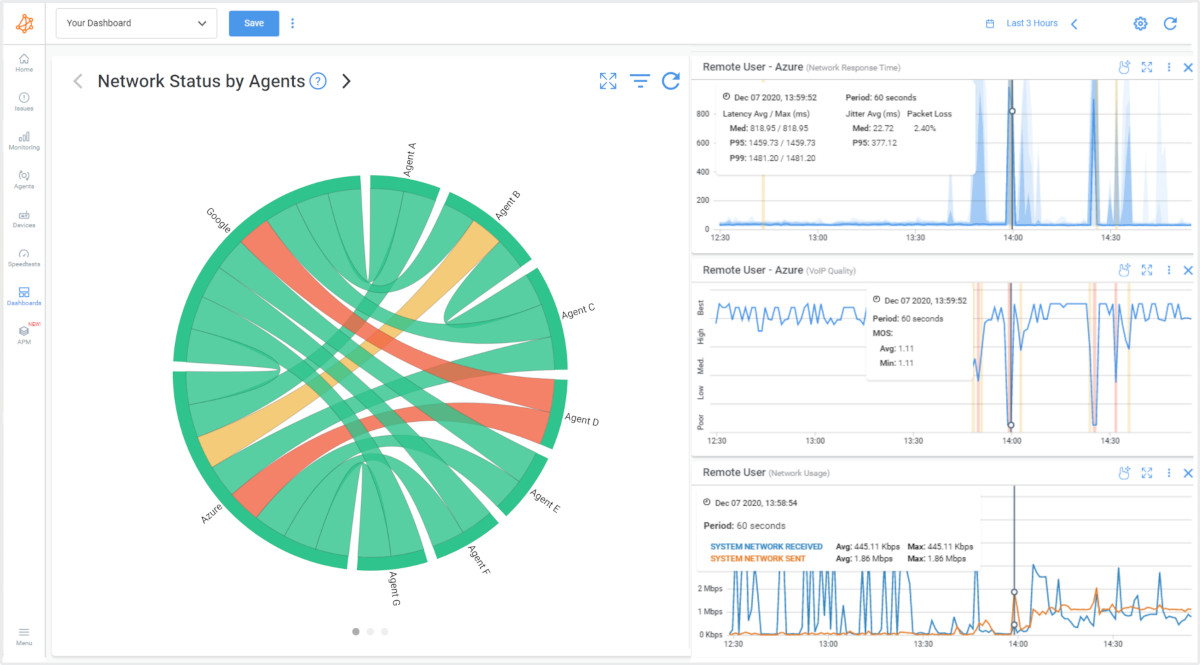

- Deploy Obkio Agents: Install Obkio monitoring agents on strategic devices within the client's network. These agents will collect real-time performance data and send it to your Obkio dashboard.
- Monitor Network Devices: Add the client's network devices to your Obkio account, including routers, switches, and endpoints. You can do this by following Obkio's device setup instructions.
- Monitor Key Metrics: Monitor critical network metrics such as bandwidth utilization, latency, packet loss, and application responsiveness. Obkio's intuitive dashboard displays these metrics in an easy-to-understand format.
- Review Metrics: Examine the collected performance data to identify any anomalies, bottlenecks, or areas requiring optimization. Look for patterns of network congestion or slow response times.
- Compare Baselines: Compare the current performance metrics against established baselines or industry standards to determine if the network is operating optimally.
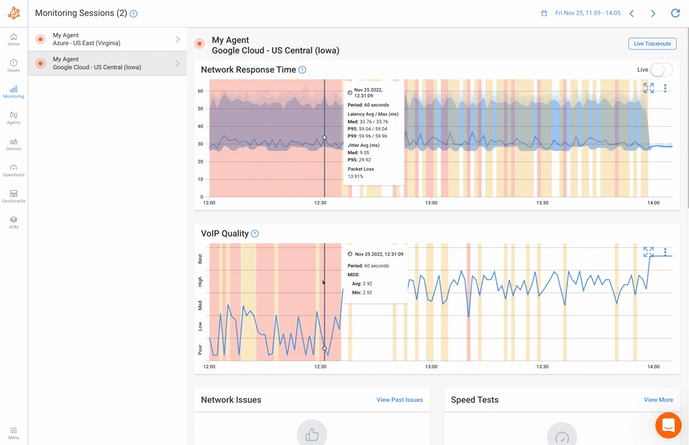
- Pinpoint Issues: Use Obkio's data visualization tools, like Obkio Vision: Visual Traceroute Tool to identify network performance issues and pinpoint specific areas of concern, such as high-latency links or bandwidth spikes during peak usage.
- Review Network Topology: Analyze the network's topology to identify potential chokepoints or areas where network traffic might be bottlenecked.
- Compile Data: Use Obkio's reporting features to gather performance data and insights into a comprehensive report.
- Include Recommendations: Within the report, provide recommendations for network optimization, such as adjusting Quality of Service (QoS) settings, upgrading hardware, or reconfiguring network paths.
- Schedule a Meeting: Set up a meeting with the client to discuss the assessment findings, recommendations, and potential next steps.
- Collaborate: Work with the client to prioritize recommended changes based on their business needs and budget constraints.
- Implement Solutions: Execute the recommended changes to address network issues and optimize performance.
- Continuous Monitoring: Keep Obkio agents active to continuously monitor the network's performance post-optimization. Use Obkio to track the impact of implemented changes and ensure ongoing network health.
By following these steps, you can effectively perform an MSP Network Assessment using Obkio. This process enables you to deliver valuable insights to your clients, enhance network performance, and solidify your role as a trusted Managed Service Provider.
You’re deploying a new service that relies on network connectivity to function.
For example, you have a customer migrating from on-premise VoIP to a hosted VoIP. A network connection, be it either a private connection or internet connection, is required to use the new service.
You need to make sure the network connection is strong and reliable before the service is deployed with network connection monitoring. If there’s an issue with the network quality after the deployment of the new service, your customer will be frustrated and you’ll be scrambling to solve an issue that you could have identified earlier.
The Solution: You need to act sooner than later. During your sales process or before the service deployment, perform a network assessment to validate that the end-to-end network performance, right from the customer to the service provider infrastructure, is strong and reliable enough to sustain the new service.
Testing the network performance before service deployment will help you identify issues with the LAN, WAN, firewalls or internet access.
The Gain Mitigate any post-deployment risk by quickly finding and fixing issues before the new service is deployed and the migration is completed.
Avoid failures, panic and client frustration by delivering a successful deployment the first time. You’re guaranteed to start your business relationship on the right foot by starting it with success!
Unlock the power of network assessment with our step-by-step network assessment template. Follow this ultimate blueprint for ongoing network excellence.
Learn more

The second network monitoring use case is probably the most commonly known, which is network troubleshooting. It is the use case that many people turn to in emergency situations.
Network Troubleshooting refers to the combined measures and processes used to identify, locate, and resolve network problems located anywhere along a network, from WAN to LAN.
MSP Network Troubleshooting, more specifically, is the process of identifying, diagnosing, and resolving issues within a client's network infrastructure by Managed Service Providers (MSPs). When network problems arise, MSPs leverage their expertise, tools, and methodologies to swiftly address these issues and restore optimal network performance and functionality. The ultimate goal of MSP Network Troubleshooting is to minimize downtime, ensure seamless connectivity, and maintain the smooth operation of the client's network environment.
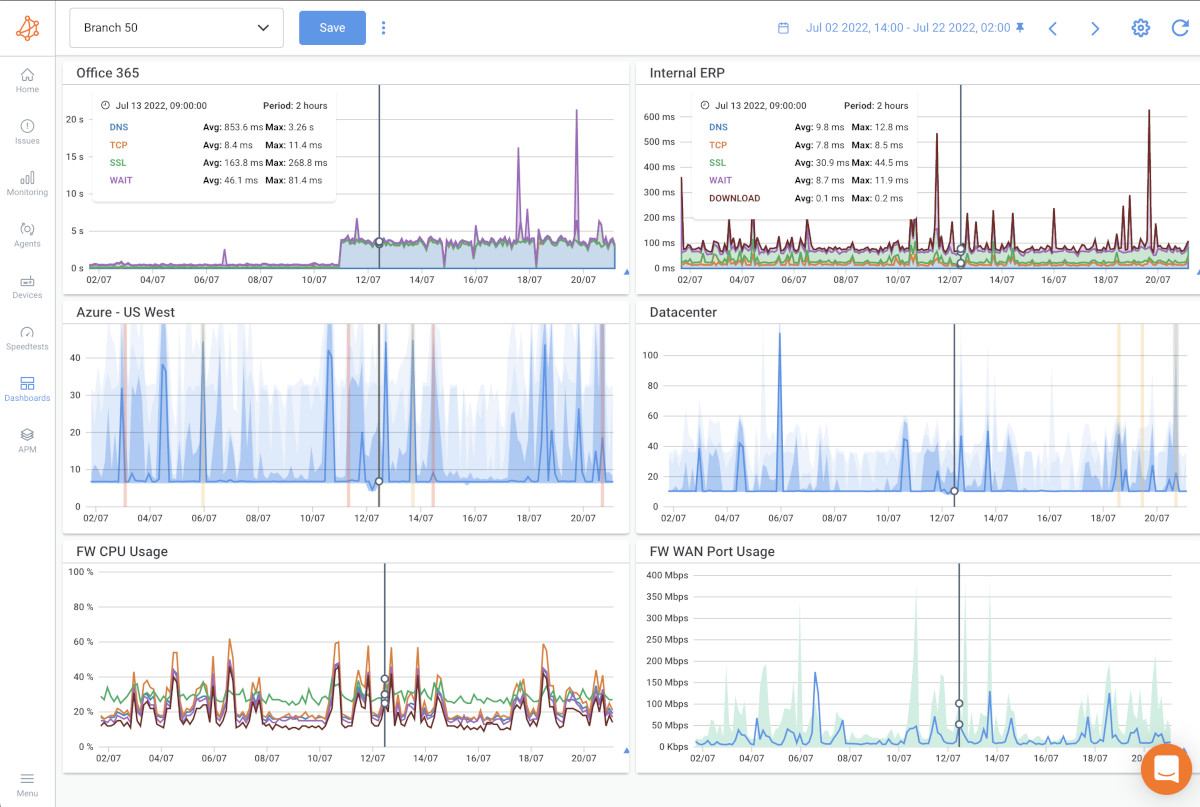
So how can MSP utilize MSP Network Troubleshooting to help their clients and ensure service quality? Here's a step-by-step guide on how MSPs can effectively perform Network Troubleshooting:
Step 1: Issue Identification:
- Receive Alerts or Reports: MSPs are often notified of network issues through monitoring tools, alerts, or reports. These can include abnormal performance metrics, downtime alerts, or user complaints.
- Gather Information: Collect as much data as possible about the reported issue. This includes information about affected devices, specific symptoms, and the time of occurrence.
Step 2: Initial Diagnosis:
- Analyze Metrics: Use network monitoring tools, like Obkio, to analyze performance metrics, such as latency, packet loss, and bandwidth utilization, to identify potential causes of the issue.
- Check Network Topology: Examine the network's topology to identify any misconfigurations, bottlenecks, or areas where traffic might be congested.
Step 3: Isolation and Testing:
- Isolate Components: Narrow down the scope of the issue by isolating specific network segments, devices, or applications that might be causing the problem.
- Testing and Validation: Conduct network performance tests to verify the issue. This might involve sending test traffic, checking connectivity, or running diagnostic commands on network devices.
Step 4: Root Cause Analysis:
- Trace the Issue: Trace the issue back to its root cause. This could be due to hardware failures, misconfigurations, software glitches, or security breaches.
- Collaborate: If necessary, collaborate with the client's IT team or relevant stakeholders to gather additional information and insights.
Step 5: Resolution and Implementation:
- Implement Fixes: Apply appropriate fixes based on the root cause analysis. This could involve reconfiguring devices, updating firmware, adjusting network settings, or applying security patches.
- Document Changes: Keep thorough records of the changes made during troubleshooting, as well as the solutions applied.
Step 6: Testing and Verification:
- Test Solutions: Verify that the implemented fixes have resolved the issue by conducting further testing and monitoring.
- Monitor Continuously: Keep a close watch on the network's performance post-resolution to ensure that the problem does not reoccur.
Step 7: Communication and Client Interaction:
- Notify the Client: Inform the client about the issue, the steps taken to resolve it, and the preventive measures applied to prevent similar problems in the future.
- Educate and Train: Provide recommendations to the client on best practices to prevent network issues and offer guidance on how to respond if similar problems arise.
By following these steps, MSPs can efficiently troubleshoot network issues, minimize disruptions, and maintain a reliable and high-performing network environment for their clients. Effective Network Troubleshooting is a key element in the toolkit of every successful Managed Service Provider.
Your end-users start reporting intermittent service performance and slowness issues. You’re a service provider (or MSP) that relies on a third-party network to deliver the service that you’re selling to your customers. Everything looks fine from your end, but you’re unable to confirm that everything is running smoothly between your customer and their infrastructure, because it’s being hosted by a third-party.
Bottom line is that your customer is experiencing problems and is unsatisfied, so you need to quickly figure out what is going wrong so you can support your customer.
The Solution: Deploy a monitoring solution, specifically a device network monitoring solution, that measures end-to-end network performance to identify issues whether they are located within the Customer LAN, Firewalls, or internet access.
Get a 360-degree view of network and application connections to see issues you never would have had visibility of before.
The Gain: Measuring network performance using a software that continuously measures technical metrics allows you to find issues, even before the end-user experiences them.
Quickly identify if the problem is related to the network, where it is and when it occurs. You can then confirm if you, the service provider, need to continue troubleshooting and manage your customer’s expectations.
Learn how to troubleshoot network issues by identifying where, what, why network problems occur with Network Troubleshooting tools.
Learn more

The third network monitoring use case is the most beneficial because it allows you to be proactive when it comes to identifying network issues and optimizing network performance.
Continuous network monitoring is the process of continuously monitoring network performance to provide real-time data on the overall health of IT infrastructure.
Continuous MSP Network Monitoring refers to the ongoing and real-time observation of a client's network infrastructure by a Managed Service Provider (MSP). This process involves using specialized tools, software, and techniques to consistently track and analyze various aspects of the network's performance, health, and security.
The goal of continuous network monitoring is to ensure the network's reliability, identify potential issues or vulnerabilities, and respond promptly to any anomalies, all while providing proactive support and value to the client.
1. Real-Time Data Collection:
- MSPs deploy Obkio's Network Monitoring tool and Monitoring Agents across the client's network to collect data continuously. Obkio's tool gathers information about network devices, traffic patterns, performance metrics, and security events.

- 14-day free trial of all premium features
- Deploy in just 10 minutes
- Monitor performance in all key network locations
- Measure real-time network metrics
- Identify and troubleshoot live network problems

2. Performance Monitoring:
- Constantly monitor key network metrics such as bandwidth utilization, latency, packet loss, and application response times. This helps ensure that the network is operating within acceptable performance levels and provides insights into potential areas for optimization.
3. Security Monitoring:
- Keep a vigilant eye on the network for any signs of security threats, unauthorized access attempts, malware, or suspicious activities. Early detection of security breaches allows for timely intervention to prevent or minimize potential damage.
4. Anomaly Detection:
- Utilize machine learning and artificial intelligence algorithms to identify abnormal patterns or deviations from the network's baseline behavior. Anomalies may indicate performance issues or security breaches that require attention.
5. Event Logging and Analysis:
- Log and analyze network events, errors, and alarms. This historical data provides valuable insights into past network incidents and aids in identifying recurring issues or patterns.
6. Automated Alerts and Notifications:
- Configure alert mechanisms that trigger notifications when predefined thresholds or critical events are met. These alerts allow MSPs to take immediate action and address potential problems before they escalate.
7. Trend Analysis:
- Analyze data over time to identify long-term trends and performance patterns. This helps MSPs make informed decisions about network upgrades, network capacity planning, and optimization strategies.
8. Performance Optimization:
- Use insights gained from continuous monitoring to recommend and implement performance optimization strategies. This might involve adjusting network configurations, load balancing, or upgrading hardware.
9. Client Reporting:
- Generate regular reports summarizing network performance, security incidents, and any actions taken. These reports provide clients with a clear understanding of their network's status and the value of the MSP's services.
10. Proactive Issue Resolution:
- By identifying and addressing potential issues before they impact the network, continuous monitoring helps MSPs deliver proactive support to clients, reducing downtime and enhancing overall network reliability.
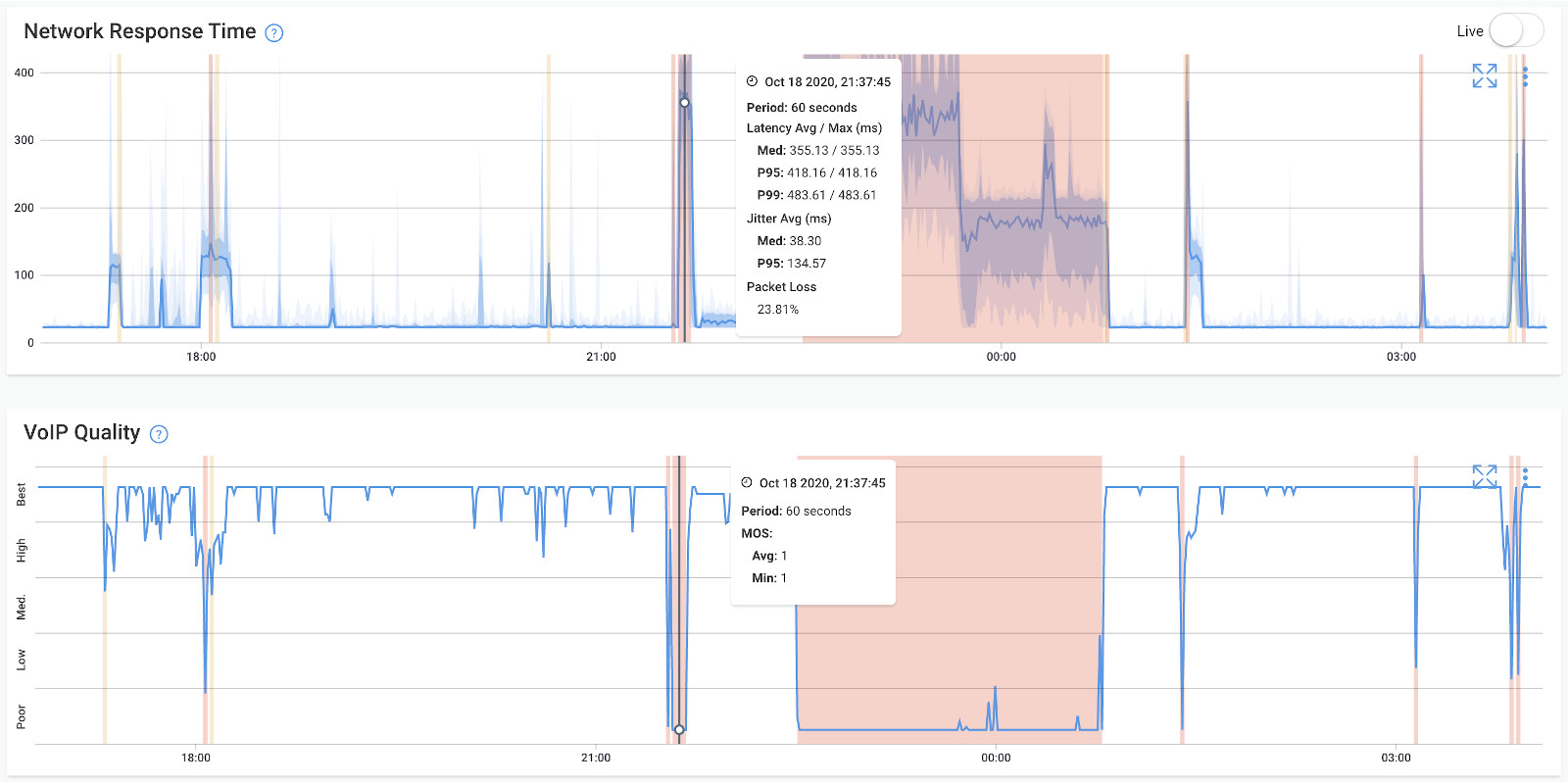
In essence, Continuous MSP Network Monitoring is a proactive and dynamic approach that ensures a client's network is consistently operating at its best. It empowers MSPs to deliver a high level of service, maintain network integrity, and provide clients with the peace of mind that their network is in capable hands.
Service providers (MSPs) aren’t really able to troubleshoot past intermittent network issues if the issues disappear by the time the customer reports them.
The truth is that it's a bad user experience for customers to report issues to their service providers, and their service providers have no clue that something is wrong. You want to ensure that an issue is resolved before it ever reaches the user.
The Solution: Deploy a continuous network monitoring solution to proactively monitor and identify network issues affecting customer experience, even before the user realizes there’s an issue.
The Gain: Proactively fix issues, even before they affect customers.
Not only will this avoid a whole lot of customer frustration, but it’ll also create value for customers, knowing that their service provider is constantly looking out for them.
Service Providers can also use Obkio for SLA Monitoring to ensure that their customers are receiving the level of service promised in the Service-Level Agreement.
In addition, the overall service performance can differentiate one service provider from the competition. Turn a negative event into a good customer experience by taking care of the customer issues quickly and efficiently.
Learn to use network optimization and monitoring to optimize network performance, improve your end-user experience, and compare performance from the past.
Learn more

In the ever-evolving landscape of network management, the role of Managed Service Providers (MSPs) has never been more crucial. As businesses rely increasingly on robust and seamless network infrastructures, the demand for proactive, efficient, and reliable network monitoring solutions continues to grow. From conducting comprehensive network assessments to swiftly troubleshooting issues and ensuring continuous performance, MSPs play a pivotal role in delivering the connectivity and reliability that modern organizations rely on.
Networks are often the backbone of businesses, so when they don’t perform to the best of their capabilities, business may suffer as a result. MSPs, if their clients’ network are experiencing issues, MSPs will be the first to hear that complaints and will need to hustle to solve the problems, and keep the clients satisfied.
One of the best ways to avoid business-impacting issues is to see them coming and fix them before they have a chance to wreak havoc on your business.

Put It to the Test: Trying Is the Ultimate Way to Learn!
Networks may be complex. But Obkio makes network monitoring easy. Monitor, measure, pinpoint, troubleshoot, and solve network problems.
Obkio for MSP Network Monitoring empowers you, the MSP, to stand at the forefront of network management excellence. Obkio not only simplifies the complex task of network assessment, troubleshooting, and continuous monitoring, but it also equips you with invaluable insights, actionable recommendations, and a deep understanding of your clients' networks. W
ith Obkio as your ally, you can navigate the ever-changing tides of network challenges with confidence, ensuring that your clients' networks remain steadfast, secure, and optimized.
- 14-day free trial of all premium features
- Deploy in just 10 minutes
- Monitor performance in all key network locations
- Measure real-time network metrics
- Identify and troubleshoot live network problems


























 Obkio Blog
Obkio Blog





